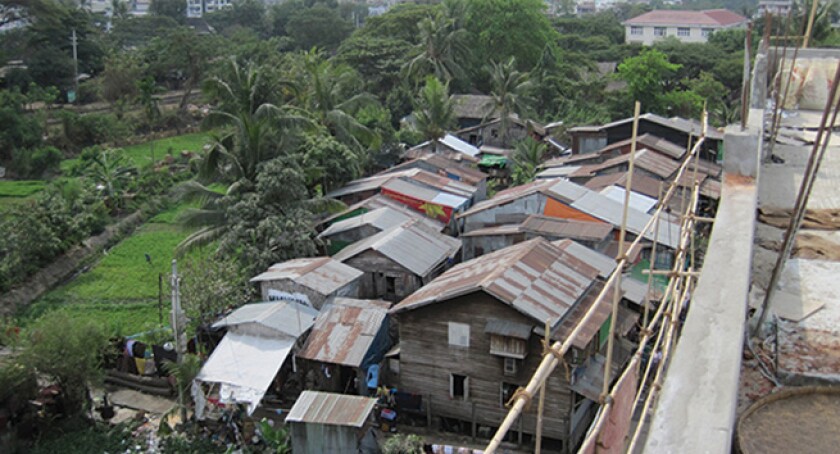The history of the Myanmar tower industry is a turbulent one. Just eight short years ago, there were no towercos on the ground and buying a SIM card was a prohibitive privilege. However, Myanmar’s digital landscape began to change in the following years up until 2015 when entrants like Telenor and Ooredoo were granted licences and an independent regulatory body created to facilitate a competitive and healthy tower market.
In 2013, Myanmar had one operator, less than 7mn phone users and 7,600 km of fibre. The new operators were supported by a wave of towercos that have built over 10,000 towers between them in just five years. But by the end of 2020, the country had in excess of 56mn mobile subscribers and a 110% mobile penetration.
The Post & Telecommunications Department (PTD) reported 23,381 towers across the country’s diverse geography with a tenancy ratio of 1.35, which varied from 1.1 to 2.2 between different players.
Even in January 2021 Swiss private equity giant CVC group agreed to purchase Irrawaddy Green Towers (IGT), the leading towerco in the country for a sum of US$700m.
Fast forward 6 months to July 2021 and the country risk became so untenable that the second largest MNO, Norway-based Telenor, announced their exit from the market with a sale to M1 group for a measly price of US$105mn.
Myanmar telecom market statistics Q3 2024

So what went wrong? Put simply, the military coup that occurred in February 2021 has crippled a resurgent Myanmar that was being held up as one of the golden children of ASEAN telecoms. The subsequent protests, and a brutal wave of Covid-19 has brought the country to its knees, with the new government going as far as shutting down the internet in April amid multiple accusations of human rights abuses
In an act of defiance against partly state-owned MyTel, local militia groups targeted telecom infrastructure throughout the latter half of 2021 and destroyed Mytel towers and co-locations, provoking the Junta to respond by planting landmines across their sites.
Towercos whose were mined immediately halted site maintenance visits, and crucially refueling, which led to inactivity and a lack of internet access for over one million people.
4G densification and 5G rollout plans in the form of investment in street furniture and smart poles have been all but scrapped.
Until everything was put on halt, Myanmar saw an explosion of towerco activity. Staying true to their approach in other markets, Viettel entered in 2018 and have been developing many small infrastructure subsidiaries across the country to satisfy its growing BTS needs. Many of these entities are becoming acquisition targets for the bigger towercos.
It also relied on independent towercos as the company recognised it would not be able to achieve its coverage commitments without their support and expertise. Mytel have built over 3,500 new towers and co-located on over 5,000 sites.
After five years in the country, Mytel became the leading operator in terms of market share and service quality in this country with 13 million subscribers. It is the operator with the largest and best 4G coverage in Myanmar with an area of nearly 90% of the population.
Myanmar estimated tower ownership - Q3 2024

All four operators had been testing 5G and regulator PTD estimated that the country could be launching the technology in two to three years.
This now looks increasingly unlikely. In the meantime, MNOs were planning on continuing to expand their networks through BTS and colocations on macro sites while also testing new solutions and typologies in urban environments. This has also been stripped back.
Grid power is still unreliable even in major cities and power is a major issue for the industry. More than 50% of the sites are in off-grid locations hence towercos and MNOs rely on gensets and batteries while exploring the benefits of hybrid systems, renewables and lithium-ion batteries to power and cover their operations.
Despite a significantly challenging 2021, the market returned to some sense of normality in 2022. It is still considered “safe” to own and operate towers in Myanmar. Tenants are still paying their bills, and towercos are even being awarded permits to build new sites.
However, sanctions placed on and by the new government make moving money in and out of the country much harder. This means it is unlikely we will see many towers in Myanmar change hands outside of the existing companies.
In September 2022 Ooredoo sold its Myanmar operation, to Singapore-based Nine Communications in a deal that valued the business at $US576 million.
Pan-Asia towerco EDOTCO is selling its 87.5% stake in its Myanmar towerco to a local investment group, Yoma Strategic Holdings, and relinquished 3,073 towers it had in the country as part of the sale, according to the latest set of financial results of its owners Axiata. Axiata announced that a US$150mn sale had been agreed in a filing with the Malaysian stock exchange in April 2024.


